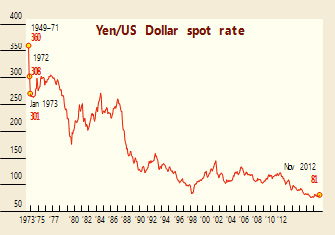
Continuous selling by DIIs put markets into consolidation phase
Institutional investors, which include domestic institutional investors (DIIs) and foreign institutional investors (FIIs) are considered key participants in the financial markets, including the equity markets. As the quantum of investments made by these institutional investors have significant impact on the performance of the markets, their flows are closely tracked by various market participants.
The term DII includes banks, domestic financial institutions (DFIs), insurance companies, mutual funds and new pension schemes. Over the past few months starting September 2012 the government has got aggressive on economic reforms and has announced various measures to bring the economy back on track, FIIs have aggressively pumped into Indian equities. On the other hand, DIIs are constantly on a selling spree. During the last six months between August 2012 and January 2013, DIIs have sold about `50,000 crore worth of equities in the Indian markets. During the same period, NIFTY has rallied by over 15 per cent from about 5200 levels to over 6000 levels.
This constant selling by the DIIs could be partly attributed to the redemption pressure by the mutual funds. As per the data published by Association of Mutual Funds of India (AMFI), the equity mutual funds have seen redemption of over `12,300 crore from the equity funds between August 2012 and January 2013.
Another key reason behind aggressive selling by DIIs could be the selling by LIC, India’s largest insurance company. In the recent past, as per various media reports, LIC is said to be building a corpus to bid for PSU shares offered in the government’s divestment programme.
As per reports, LIC has sold over ‘25,000 crore worth of shares during April 2012-January 2013. In the third quarter of 2012-13 alone, LIC has pared stake in 27 NIFTY firms, selling shares worth ‘8,000 crore. The government is taking every possible step to make the divestment programme a success and contain fiscal deficit to targeted levels of 5.3 per cent of GDP to give a boost to the ailing economy.
The recently completed ‘11,400 crore NTPC OFS issue saw good response from the investors. The issue was oversubscribed 1.7 times. As much as 43 per cent of the issue was picked up by the FIIs, while 11.05 per cent was taken by the banks, 8.35 per cent by mutual funds and 24.87 per cent by the insurance companies. With 73 per cent of the disinvestment target for 2012-13 already achieved after the NTPC issue, there is little reason for LIC to continue its selling in equity markets.
The economy is still in the doldrums. The IIP data for December 2012 still shows contraction in industrial activities. Recently, the CSO has pegged the GDP for 2012-13 at 5.0 per cent. All these factors may force the RBI to cut interest rates and boost the ailing economy. The fall in interest rates would make investments in FDs less attractive for retail investors. The recently announced increase in import duties on gold by the government is expected to curb investments into gold. All these factors would result in reduced pressure on mutual funds for redemption from equity schemes. By the start of the new fiscal year, LIC would be ready with its fresh corpus to invest in Indian equities. All these factors point towards lower outflows by DIIs from equities.
In the calendar y-t-d period, FIIs have net bought over `27,500 crore in Indian equities, which was negated by ‘24,400 crore of DII outflows. As FIIs continue their buying into the Indian markets and with lower DIIs outflows, markets are bound to soar in the new fiscal year.
This article was originally published in Business India Magazine.
Write to us at news@valuelineadvisors.com
Disclaimer: The views expressed in this article are personal and the author is not responsible in any manner for the use which might be made of the above information. None of the contents make any recommendation to buy, sell or hold any security and should not be construed as offering investment advice.
